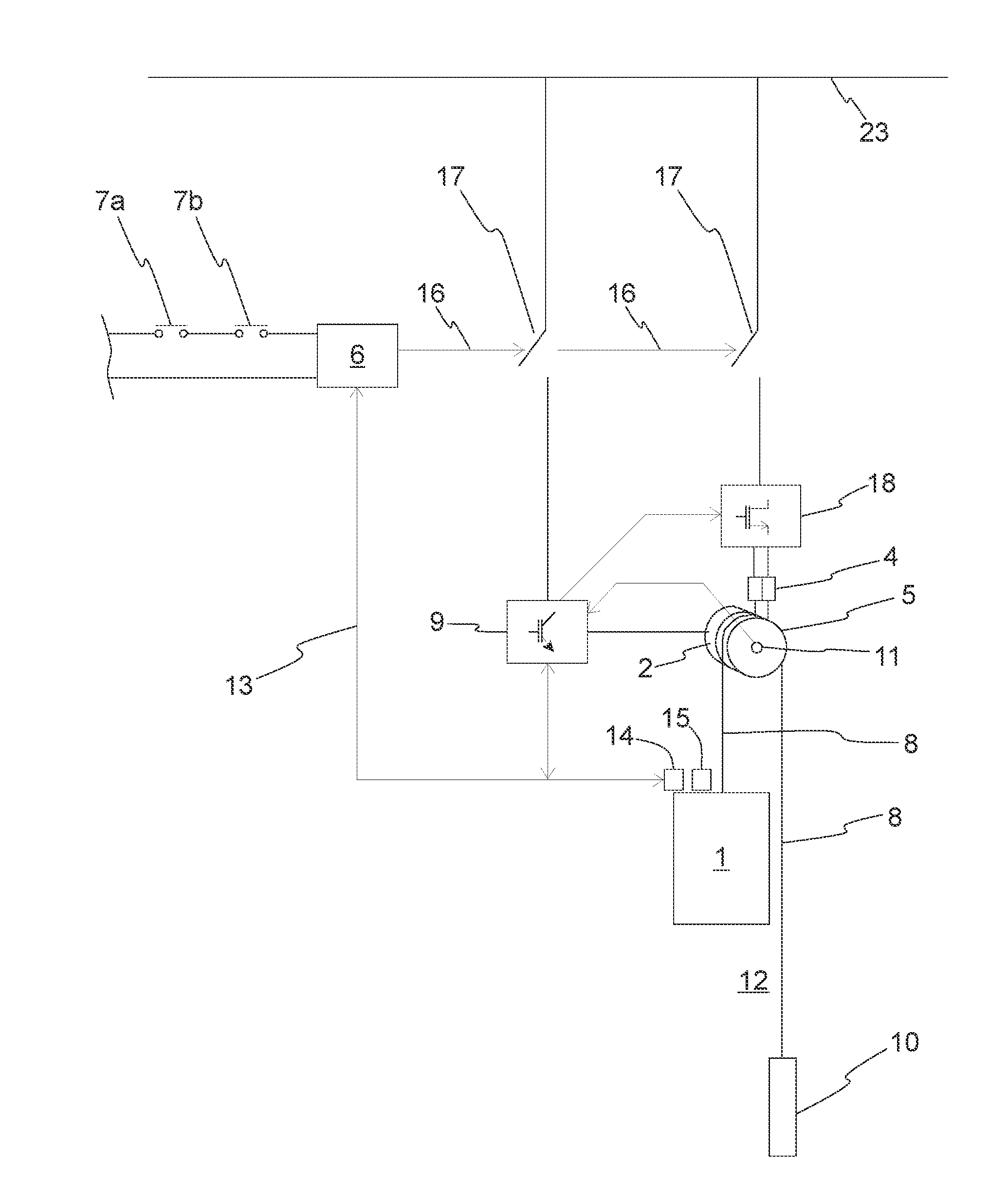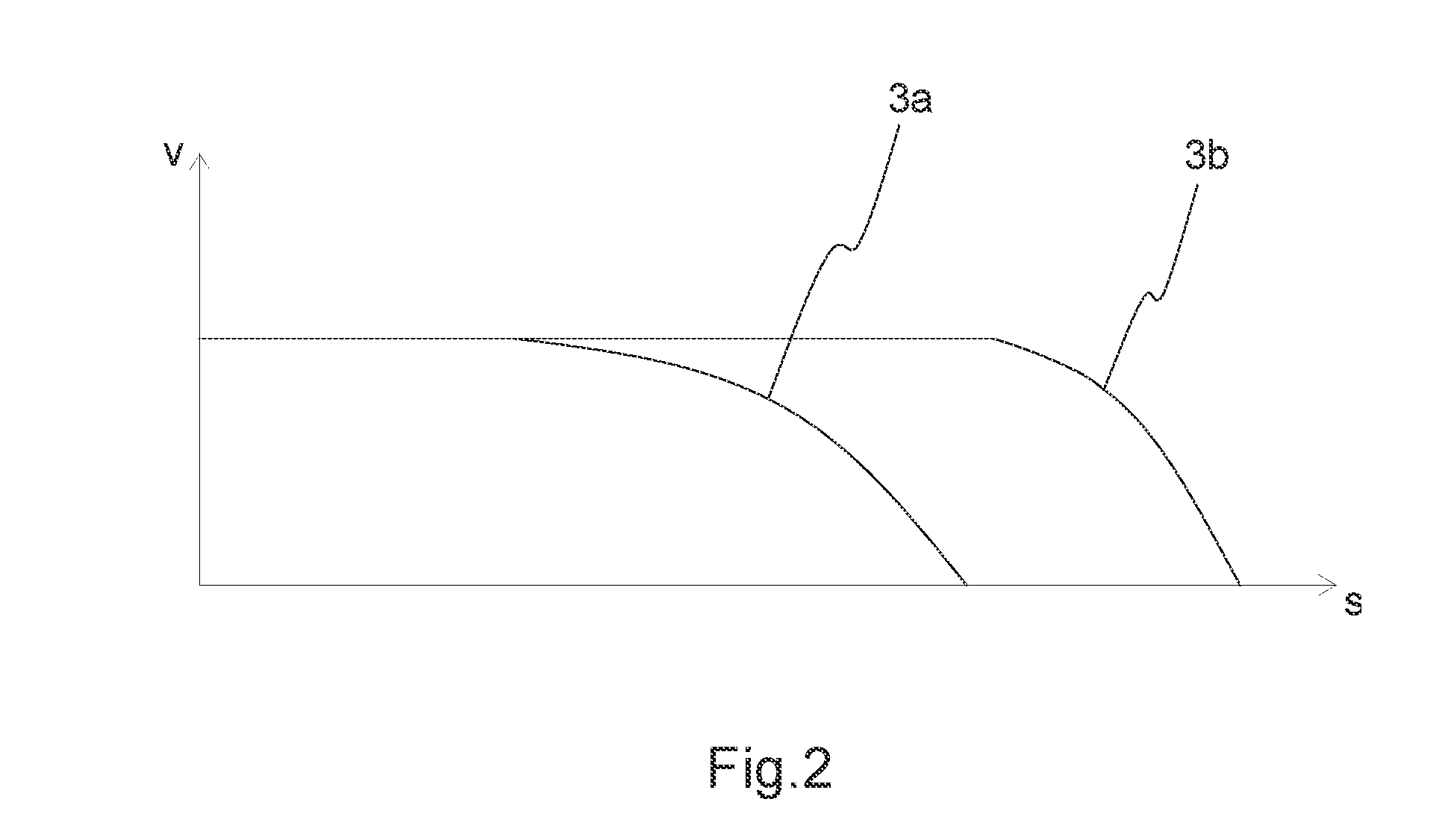Method for performing an emergency stop, and a safety arrangement of an elevator
a technology for elevators and emergency stops, applied in elevators, computer control, instruments, etc., can solve the problems of unnecessarily large deceleration, unnecessary large difference between the smallest and greatest deceleration during emergency stops, etc., to improve the reliability of brakes, reduce the braking torque of machinery brakes, and simplify the structure of brakes
- Summary
- Abstract
- Description
- Claims
- Application Information
AI Technical Summary
Benefits of technology
Problems solved by technology
Method used
Image
Examples
Embodiment Construction
[0023]For the sake of clarity, FIGS. 1-3 endeavor to present only the features that are essential from the viewpoint of understanding the invention. Consequently e.g. some generally known parts belonging to an elevator are not necessarily presented in the figures if the presentation of them is not significant from the viewpoint of understanding the invention.
[0024]FIG. 1 presents a safety arrangement in an elevator, in which the elevator car 1 is moved in the elevator hoistway 12 by pulling the hoisting roping 8 of the elevator car with the traction sheave 5 of the hoisting machine 2. The elevator car 1 is driven by rotating the traction sheave 5 with an electric motor in the hoisting machine 2, by supplying current to the electric motor from the electricity network 23 with a frequency converter 9. The elevator car 1 is also braked by the electric motor of the hoisting machine 2 with motor braking, in which case electric power returns to the frequency converter 9, from where it is s...
PUM
 Login to View More
Login to View More Abstract
Description
Claims
Application Information
 Login to View More
Login to View More - R&D
- Intellectual Property
- Life Sciences
- Materials
- Tech Scout
- Unparalleled Data Quality
- Higher Quality Content
- 60% Fewer Hallucinations
Browse by: Latest US Patents, China's latest patents, Technical Efficacy Thesaurus, Application Domain, Technology Topic, Popular Technical Reports.
© 2025 PatSnap. All rights reserved.Legal|Privacy policy|Modern Slavery Act Transparency Statement|Sitemap|About US| Contact US: help@patsnap.com



